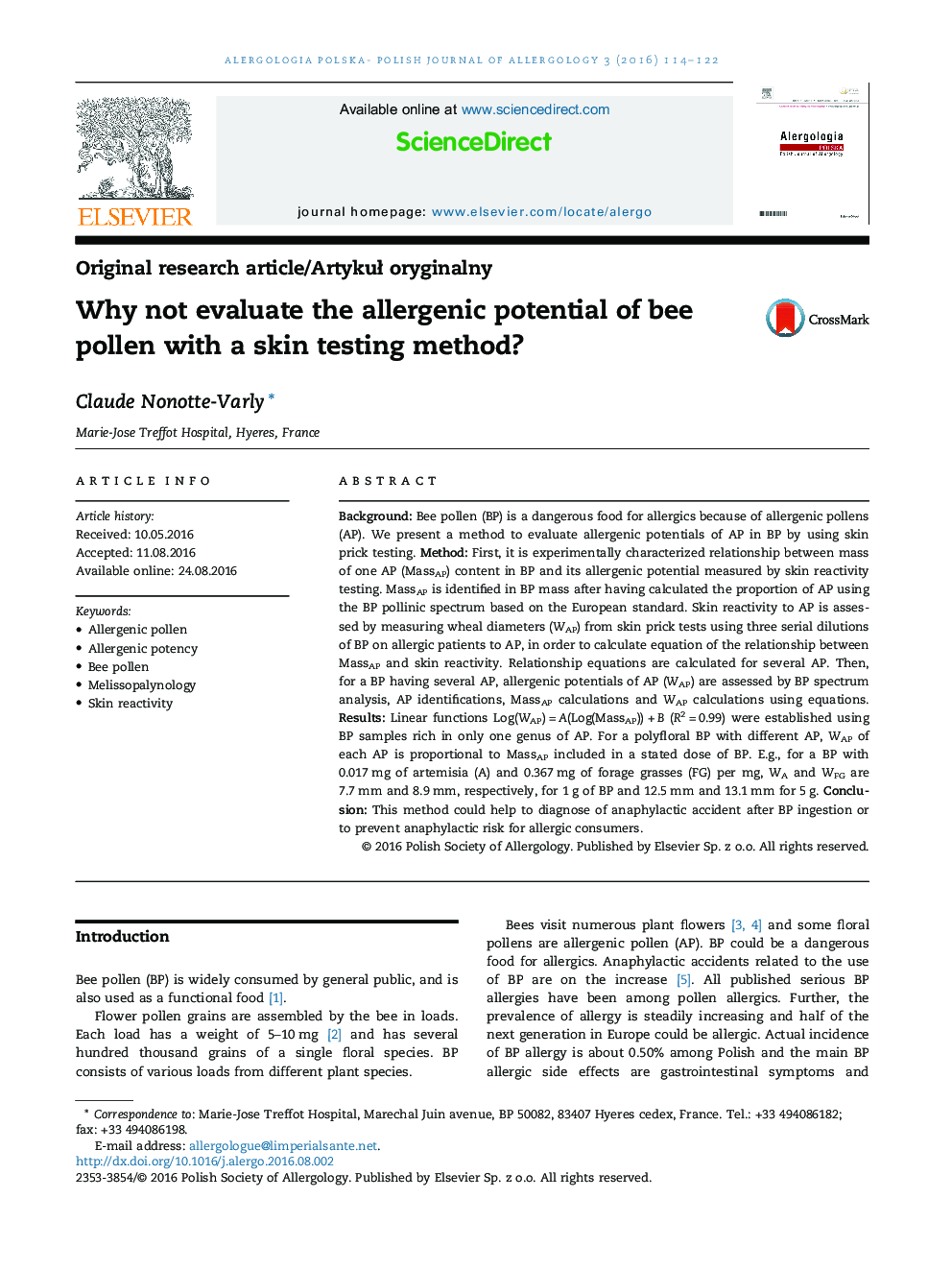| Article ID | Journal | Published Year | Pages | File Type |
|---|---|---|---|---|
| 5644454 | Alergologia Polska - Polish Journal of Allergology | 2016 | 9 Pages |
Abstract
Background: Bee pollen (BP) is a dangerous food for allergics because of allergenic pollens (AP). We present a method to evaluate allergenic potentials of AP in BP by using skin prick testing. Method: First, it is experimentally characterized relationship between mass of one AP (MassAP) content in BP and its allergenic potential measured by skin reactivity testing. MassAP is identified in BP mass after having calculated the proportion of AP using the BP pollinic spectrum based on the European standard. Skin reactivity to AP is assessed by measuring wheal diameters (WAP) from skin prick tests using three serial dilutions of BP on allergic patients to AP, in order to calculate equation of the relationship between MassAP and skin reactivity. Relationship equations are calculated for several AP. Then, for a BP having several AP, allergenic potentials of AP (WAP) are assessed by BP spectrum analysis, AP identifications, MassAP calculations and WAP calculations using equations. Results: Linear functions Log(WAP)Â =Â A(Log(MassAP))Â +Â B (R2Â =Â 0.99) were established using BP samples rich in only one genus of AP. For a polyfloral BP with different AP, WAP of each AP is proportional to MassAP included in a stated dose of BP. E.g., for a BP with 0.017Â mg of artemisia (A) and 0.367Â mg of forage grasses (FG) per mg, WA and WFG are 7.7Â mm and 8.9Â mm, respectively, for 1Â g of BP and 12.5Â mm and 13.1Â mm for 5Â g. Conclusion: This method could help to diagnose of anaphylactic accident after BP ingestion or to prevent anaphylactic risk for allergic consumers.
Related Topics
Life Sciences
Immunology and Microbiology
Immunology and Microbiology (General)
Authors
Claude Nonotte-Varly,
